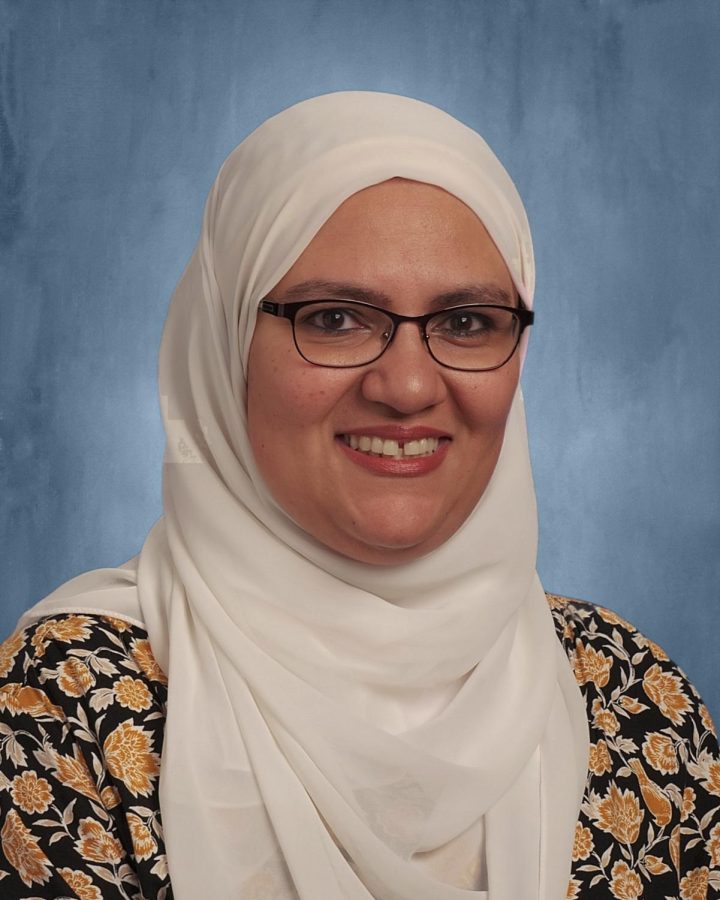Diving into Culture with New Math Teacher Ms. A
November 14, 2022
“Ms. A is such a great teacher and it is clear she truly cares about her students,” sophomore Georgia Tyrell remarks. This description stands true as new teacher Ms. A quickly becomes a beloved teacher at WHS. Although she is a first-year teacher at WHS, Ms. A has taught for many years, starting as a computer teacher at a small, private, Islamic school in Worcester.
Ms. A grew up in Egypt speaking both English and Arabic in school. She worked as a Network Engineer at the main hub for the internet in the country. Her responsibilities involved maintaining international links to the internet and technology support for companies that use the internet.
A few years after moving to the US, Ms. A took a job teaching computer classes to students in a private Islamic middle school. From there, she became a math teacher in middle school, which she adored. After teaching at that school for a few years, Ms. A wanted to experience working as a public school teacher, so she earned her Master’s in Education and taught middle school until 2019 when she taught at Nashoba Regional High School. Of course, this was the school year when the pandemic hit the world, which made her first year teaching high school all the more difficult.
“I enjoy having good connections with my students,” Ms. A says, “and remote learning did not allow me to have that connection.”
Ms. A continued her high school teaching at Hudson High School for two years until arriving at WHS. This year, Ms. A teaches statistics, geometry, and algebra II. Ms. A especially enjoys teaching Statistics and Geometry.
The teaching philosophy that makes her so beloved among students: “I have high expectations for my students. I believe everyone can learn math if they are placed in the right environment with a good amount of support”, Aside from actually teaching math, Ms. A loves getting to know students and seeing them grow throughout the year.
Outside of the classroom, Ms. A enjoys reading, traveling, painting, and spending time with her husband and two high school children. She enjoys going for walks when the weather is nice. Her favorite show of all time is Friends.
Even after visiting Egypt for six weeks every summer, living away from her family and friends continues to be one of the hardest aspects of living in the US. Plus, the cultural change from Egypt to the US was also a struggle.
Ms. A began, “ I have my family back in Egypt; when I came here I didn’t know anyone: no family, no friends.” Not only this, but Ms. A describes, “Life here is more centered around work. Work in Egypt is important but it is not the main focus. Spending time with family and friends is as important.”
Ms. A continues talking about the vast differences between the countries when she says, “For example, in Egypt, everything is open until late at night. Here, by the time it is dark, it is dark: everything is done [for the day].”
In Egypt, people are still active at midnight, whereas in the US most places are closed by 8:00 on weekdays.
Despite all of these changes, Ms. A and her family remained in the US as it was what is best for them. However, life hasn’t been without its challenges, particularly for Ms. A, a Muslim woman of color.
When asked about her opinion on the diversity in Westborough, she comments, “I think the fact that the district is hiring people of color, of different backgrounds shows how they are open to diversity.”
Though this may seem like a given, whoever is qualified should be offered the position, but in numerous places, that is not the case.WHS, however, was different for Ms. A. She could tell they were dedicated to inclusivity and diversity in their school district which is one of the reasons she accepted the position at Westborough.
One of the parts of her religion that are most misunderstood is the hijab. Ms. A clarified that although the hijab is required for women in Islam, and women are generally supposed to start wearing the hijab around puberty, not all young women will do so. For Ms. A, personally didn’t wear the hijab until she came to the US when she was 24.
“It is a commitment,” Ms. A says, “We are wearing it for modesty. And to make that decision you have to make sure you’re not just wearing a scarf to cover your hair, but it also should reflect on your actions. You should be a good person.” Ms. A firmly believes a woman should wear the hijab when she is ready to do so.
In Islam, wearing the hijab is by choice, contrary to what modern society portrays. “This is what always shows in the media: if a woman is wearing a hijab or she decides to keep covered, that means she’s oppressed; that means she’s forced to do it. But most of the time, it is actually her choice.
From here, Ms. A discussed the difference between the crisis in Iran and her native country in Egypt: “In Egypt it’s different. Everyone is free to do whatever they want…We advise each other [Muslim woman to Muslim woman].”
Ms. A says, continuing on to explain that Iran is rigid with their laws regarding women covering themselves, with which she disagrees. Along the same lines, Ms. A says she empathizes with the women in Iran as no one should be murdered or tortured for not wearing a hijab.
“You can advise, tell her ‘maybe you should wear the hijab’, but it ends there,” Ms. A states. She hopes that the women in Iran continue to fight for their rights while still keeping their hijab.








